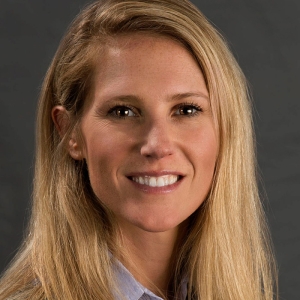Nurse Practitioners: A Look Back and Moving Forward
November 10, 2017- Practice
As we celebrate National Nurse Practitioner Week, Theresa Granger, clinical assistant professor in the Department of Nursing at the USC Suzanne Dworak-Peck School of Social Work, provides a brief history of the rise of nurse practitioner programs in the United States and shares her views on the future of this important profession.
A Brief History
The first nurse practitioner (NP) program in the nation was created in 1965 by Loretta Ford and Henry Silver from the University of Colorado. At the time, there was a need for health care among underserved populations. Nurses wanted a way to meet this need and saw expanding their role as the best way to accomplish this.
Ford and Silver believed that the social and political climate of the time created opportunities for change. The newly created nurse practitioner role was about people, caring for them and making very sophisticated clinical decisions that would help people live healthier lives, according to Ford.
Since the role was created more than 50 years ago, the number and influence of nurse practitioners has steadily continued to increase and spread across the United States.
Shortly after the role was created, nurse practitioner educational programs began to emerge, with Boston College being one of the earliest master's degree programs to arrive on the scene. From the late 1960s to 1970s, educational programs continued to expand.
By the early 1980s, there were more than 15,000 nurse practitioners in the nation and more than 200 nurse practitioner programs available.
With an estimated 24,000 nurse practitioners in the United States, the American Association of Nurse Practitioners (AANP) was established in 1985 in response to the growing profession. It is reported that in 1989, just 28 years after the role was created, 98 percent of nurse practitioner programs were at the master's or post-master's level. During this time, AANP worked as an organization to formally represent nurse practitioners in all states across the nation.
The Nurse Practitioner Today
The nurse practitioner role is going strong and shows no signs of slowing down. According to AANP, there are currently more than 234,000 nurse practitioners in the United States. Ninety eight percent of all nurse practitioners have graduate degrees and 90 percent are certified in a primary care area, with the majority of those being certified as family nurse practitioners.
Since the 1960s, America's health care needs continue to grow and are challenged more than ever before. Chronic problems such as diabetes, while now manageable, have added to these challenges. In addition, underserved and vulnerable populations (particularly those individuals experiencing homelessness) have continued to increase, as have their barriers to health care. The complexities of these issues have been the motivating factor behind the creation of the Doctor of Nursing Practice (DNP) degree for nurse practitioners.
As primary care providers, nurse practitioners provide invaluable health care services. The versatility of the role, along with strong roots in health promotion, patient education and interprofessional (team) practice, allow nurse practitioners to successfully function in a wide variety of practice settings that care for individuals across the lifespan.
The future is bright for nurse practitioners. Not only are nurse practitioners important organizational leaders and change agents, they will help lead health care reform. They will be responsible for closing the health care gap at a time when the United States is experiencing a critical shortage of qualified health care providers across all practice settings. As has been proven throughout the history of the role, nurse practitioners embrace challenges, and they will continue to create innovative ways to solve these challenges.
To reference the work of our faculty online, we ask that you directly quote their work where possible and attribute it to "FACULTY NAME, a professor in the USC Suzanne Dworak-Peck School of Social Work” (LINK: https://dworakpeck.usc.edu)
